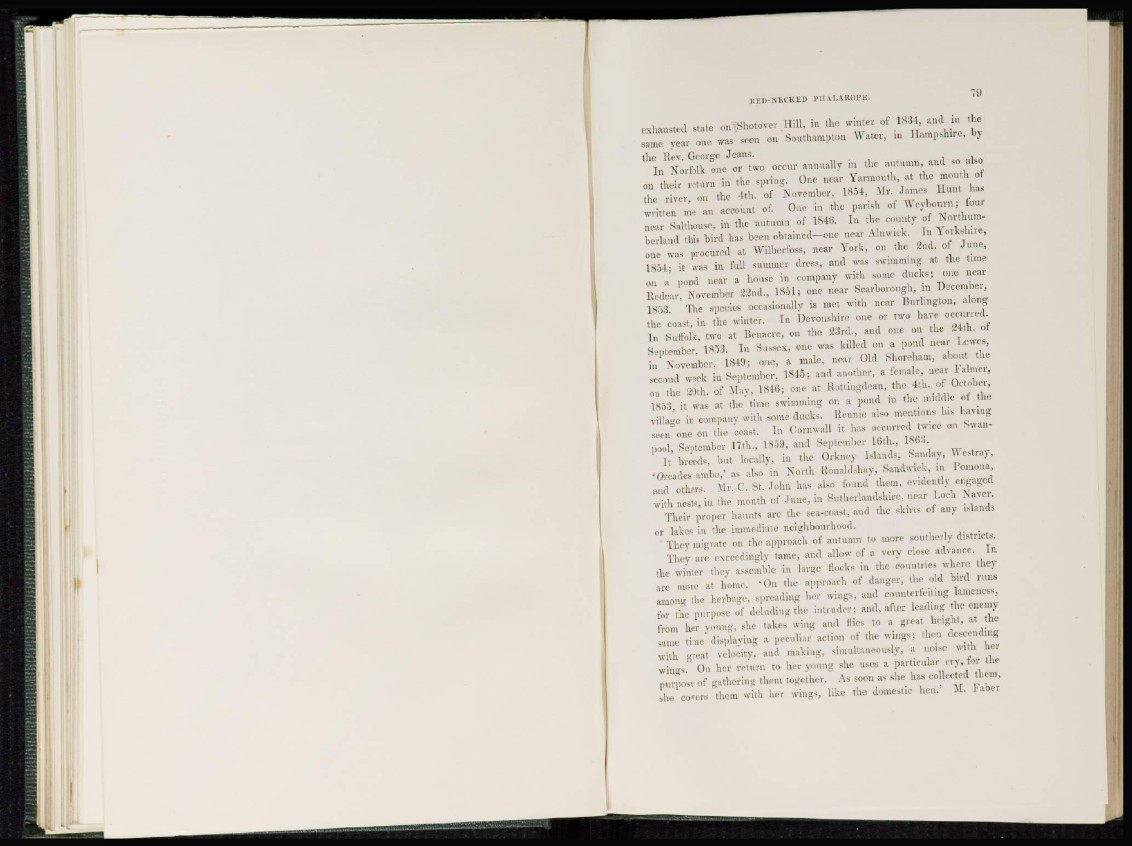
RED-NECKED PH ALA ROPE.
exhausted slate on Shotover Hill, in the winter of 1834, and in the
same year one was seen on Southampton Water, in Hampshire, by
the Rev. George Jeans.
I n Norfolk one or two occur annually in the autumn, and so also
on their return in the spring. One near Yarmouth, at the mouth of
the river, on the 4th. of November, 1854, Mr. James Hunt has
written me an account of. One in the pariah of Weybourn; four
near Salthouse, in the autumn of 1846. In the county of Northumberland
this bird has been obtained—one near Alnwick. In Yorkshire,
one was procured at Wilberfoss, near York, on the 2nd. of June,
1854; it was in full summer dress, and was swimming at the time
on a pond near a house in company with some ducks; one near
Redcar, November 22nd., 1851; one near Scarborough, in December,
1853. The species occasionally is met with near Burlington, along
the coast, in the winter. In Devonshire one or two have occurred.
In Suffolk, two at Benacre, on the 23rd., and one on the 24th. of
September, 1853. In Sussex, one was killed on a pond near Lewes,
in November, 1849; one, a male, near Old Shoreham, about the
second week in September, 1845; and another, a female, near Falmer,
on the 20th. of May, 1846; one at Rottingdean, the 4th. of October,
1853, it was at the time swimming on a pond in the middle of the
village in company with some ducks. Rennie also mentions his having
seen one on the coast. In Cornwall it has occurred twice on Swanpool,
September 17th., 1859, and September 16th., 1863.
It breeds, but locally, in the Orkney Islands, San day, West ray,
'Orcades ambo,' as also in North Ronald-hay, Sandwich, in Pomona,
and others. Mr. (.'. St. John has also found them, evidently engaged
with nests, in the month of June, in Sutherlandshire, near Loch Naver.
Their proper haunts are the sea-coast, and the skirts of any islands
or lakes in the immediate neighbourhood.
They migrate on the approach of autumn to more southerly districts.
They arc exceedingly tame, and allow of a very close advance. In
the winter they assemble in large flocks in the countries where they
are more at home. 'On the approach of danger, the old bird runs
among the herbage, spreading her wings, and counterfeiting lameness,
for the purpose of deluding the intruder; and, after leading the enemy
from her young, she takes wing and flies to a great height, at the
same time displaying a peculiar action of the wings; then descending
with great velocity, and making, simultaneously, a noise wuth her
wings. On her return to her young she uses a particular cry, for the
purpose of gathering them together. As soon as she has collected them,
she covers them with her wings, like the domestic hen.' M. Pabei